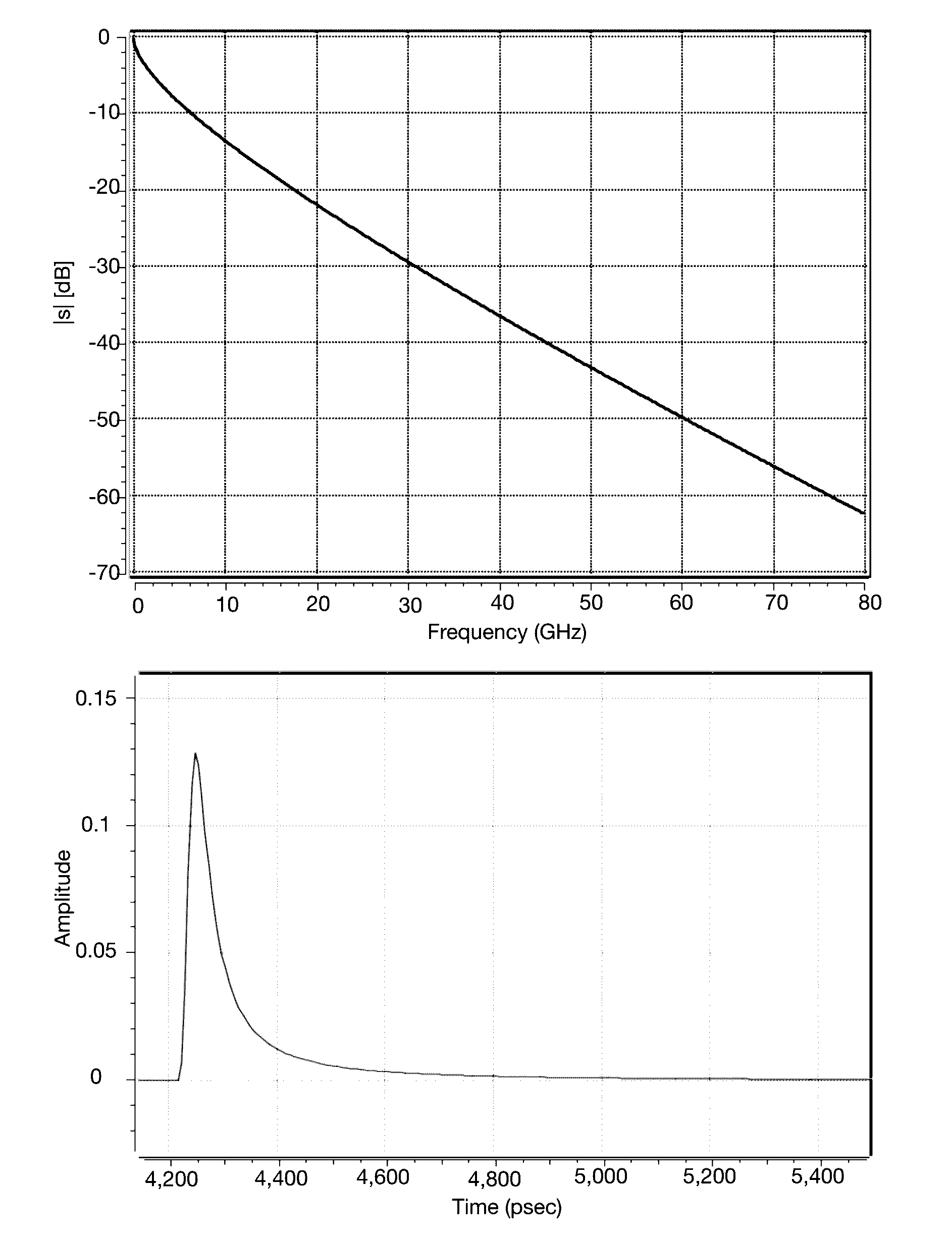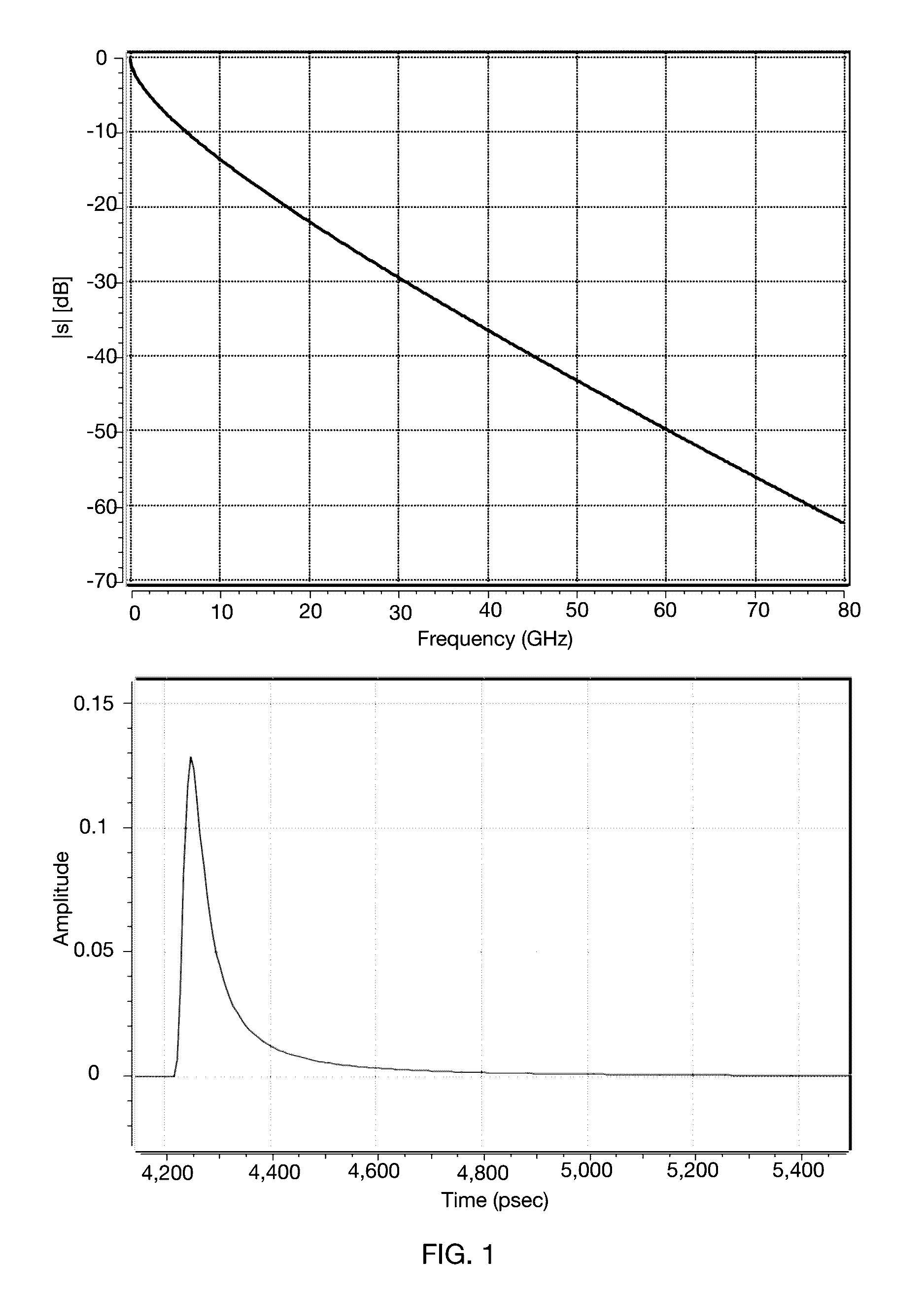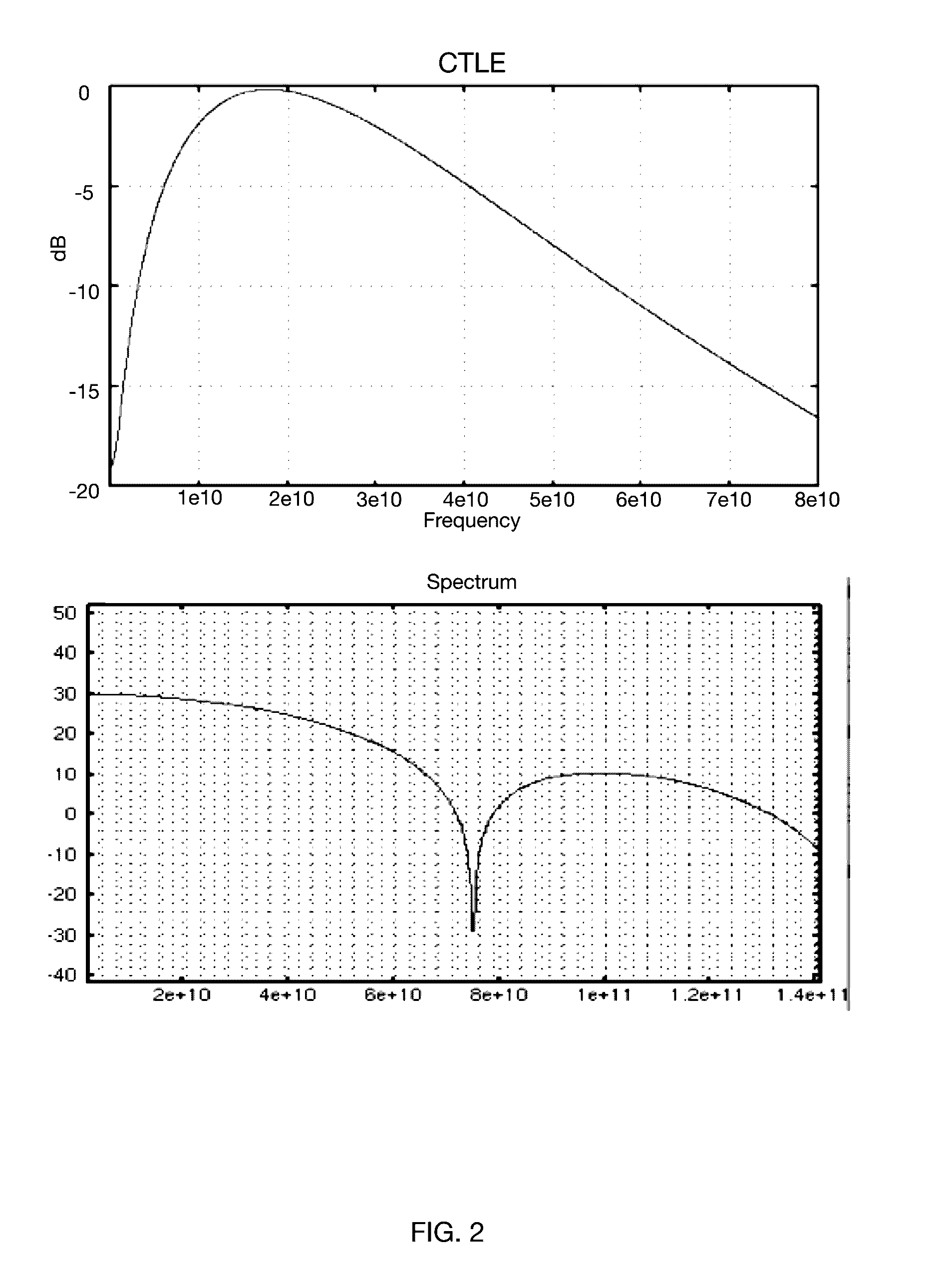High speed communications system
a communication system and high-speed technology, applied in the field of communication, can solve problems such as data skew, increase and achieve the effect of improving the complexity and power consumption of the communication interfa
- Summary
- Abstract
- Description
- Claims
- Application Information
AI Technical Summary
Benefits of technology
Problems solved by technology
Method used
Image
Examples
first embodiment
[0047]Simulation of a first embodiment combining ENRZ signaling at a 75 Gigasymbol / second rate with the reference channel model indicates that a two tap FFE (transmit Feed-Forward Equalization) may be combined with receiver continuous-time linear equalization (CTLE) and a 12 tap Decision Feedback Equalizer (DFE), with performance as illustrated in the graphs of FIG. 2. The receive eye simulation of FIG. 3 shows a 93 mV vertical eye opening and a 14.5 psec edge-to-edge horizontal eye opening.
Duobinary Encoding
[0048]Duobinary encoding is a solution known in the art in which consecutive bits of a serially transmitted data stream are processed to shape and constrain the resulting transmit data spectrum. It is well known that Inter-Symbol Interference (ISI) such as may be produced by transmission medium perturbations will result in the received amplitude of a signal in one unit interval to be perturbed by residual energy from previous unit intervals. As one example, inverted pulse reflec...
second embodiment
[0052]A second embodiment incorporating ENRZ encoding at a 75 Gigasymbol / second rate, subsequent duobinary processing of each wire signal, a 2 tap FFE, CTLE, and a 12 tap DFE was simulated using the reference channel model, producing the CTLE gain and spectrum results shown in FIG. 4. The receive eye simulation shown in FIG. 5 shows a 75 mV vertical receive eye opening and a 13.7 psec edge-to-edge horizontal eye opening.
[0053]These results, although representing considerable improvement over straightforward NRZ data transmission, indicate additional work is needed.
Channelization
[0054]If purely baseband communications solutions are insufficient, might a broadband approach be of benefit? Historically, such significant levels of physical transport channel limitation had been seen and addressed before, albeit at far lower data rates, during the efforts to provide high speed digital services over the legacy copper wire infrastructure of the telephony network. For DSL at its desired 3 Meg...
third embodiment
[0057]A third embodiment combines ENRZ, duobinary, and a two frequency-domain channel approach to address the issues of the previous proposals. The first frequency channel is at baseband, i.e. comparable to the single channel of the previous embodiment. The second frequency channel is composed of the same ENRZ+duobinary signaling modulating a sinusoidal carrier, chosen to minimize the frequency overlap between spectral components of the baseband and of the carrier channel.
[0058]In the following example, a carrier frequency of 37.5 GHz will be used, with no limitation implied. Comparable results have been obtained in simulations using a 30 GHz carrier frequency, and lower frequencies may be used with improved channel attenuation characteristics but somewhat higher inter-channel interference, as will be shown in a subsequent example.
[0059]Both frequency channels run at a signaling rate of 37.5 Gsymbols / second, with three data bits being transported over the four wires of the baseband ...
PUM
 Login to View More
Login to View More Abstract
Description
Claims
Application Information
 Login to View More
Login to View More - R&D
- Intellectual Property
- Life Sciences
- Materials
- Tech Scout
- Unparalleled Data Quality
- Higher Quality Content
- 60% Fewer Hallucinations
Browse by: Latest US Patents, China's latest patents, Technical Efficacy Thesaurus, Application Domain, Technology Topic, Popular Technical Reports.
© 2025 PatSnap. All rights reserved.Legal|Privacy policy|Modern Slavery Act Transparency Statement|Sitemap|About US| Contact US: help@patsnap.com



